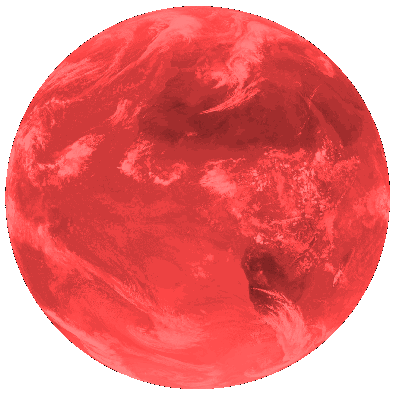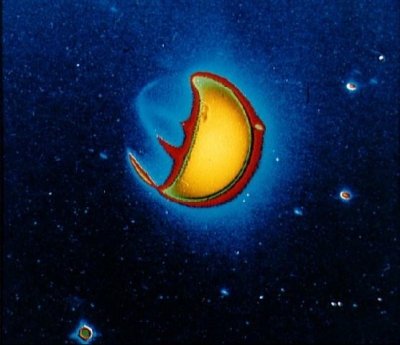1. Light and Radiation
The radiation spectrum (3/3)
Even deeper in the IR the earth reveals again new features when seen from space. The image below ist taken in the IR at 10.5 - 12.5 μm. You will recognise land surfaces, except Europe and Central Africa.

Apparently the absorption of radiation due to water vapour and other gases is small at this wavelength, leading to a high transmission of the clear atmosphere. Aerosols such as dust and fog but also thin stratus clouds scatter radiation, which explains the low visibility of some regions in the image. An important aspect is that the signal seen in clear atmospheric regions is not from reflected sunlight. Instead, it is the earth surface which emits the IR radiation measured by the satellite. Its intensity depends on the temperature, thus making it possible to measure the temperature of land and ocean surfaces on global scales!
We should have a look at the other side of the visible spectrum as well: the ultraviolet! There are not so many UV images available of the full disk of the earth in this spectral range. But in April 1972 the Apollo 16 astronauts deployed a Far UV Camera / Spectrograph on the moon and took an image of the earth which has been processed by NASA later-on.

The right part of the earth is facing the sun. Structures on the earth surface are not visible since the UV radiation does not reach the ground but is reflected by particles in the outer atmosphere. The side facing away from the sun where UV is not expected to be seen shows filament-like structures of enhanced UV intensity which is due to an aurora from charged particles emitted by the sun and following the magnetic field lines surrounding the earth.
